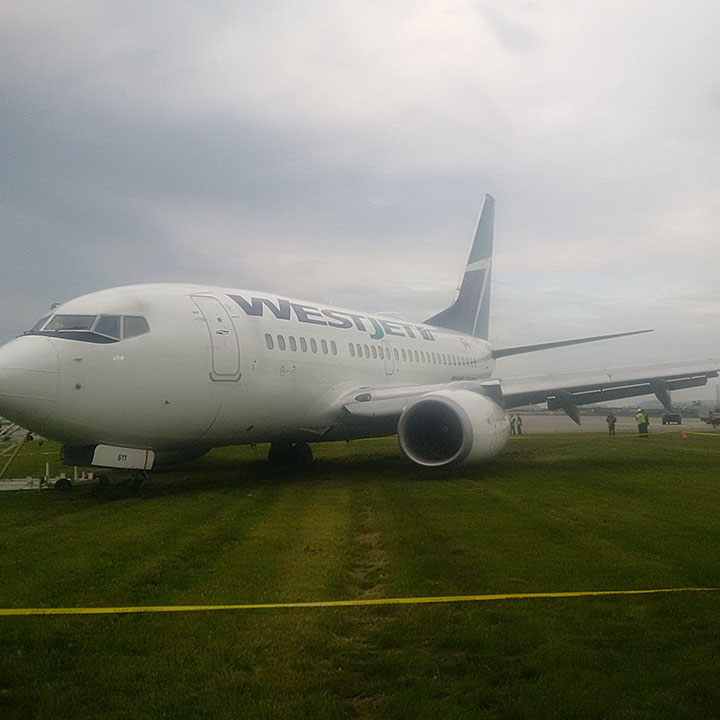Runway overrun
WestJet
Boeing 737-6CT, C-GWCT
Montréal/Pierre Elliott Trudeau International Airport, Quebec
The occurrence
On 05 June 2015, a WestJet Boeing 737-6CT (registration C-GWCT, serial number 35112) was operating as flight 588 on a scheduled flight from Toronto/Lester B. Pearson International Airport, Ontario, to Montréal/Pierre Elliott Trudeau International Airport, Quebec. At 1457 Eastern Daylight Time, the aircraft touched down in heavy rain showers about 2550 feet beyond the threshold of Runway 24L and did not stop before reaching the end of the runway. The aircraft departed the paved surface at a ground speed of approximately 39 knots and came to rest on the grass, approximately 200 feet past the end of the runway. There were no injuries to the 107 passengers or 5 crew members and no damage to the aircraft. The 406-megahertz emergency locator transmitter did not activate. The incident occurred at 1458, in daylight.
Media materials
News release
June 2015 runway overrun in Montréal, Quebec, attributed to delayed use of deceleration devices following a long landing in heavy rain
Read the news release
Deployment notice
TSB deploys team to the site of an aircraft accident at Pierre Elliot Trudeau International Airport at Montreal, Quebec
Dorval, Quebec, 5 June 2015 - The Transportation Safety Board of Canada (TSB) is deploying a team of investigators to the site of an accident at Pierre Elliot Trudeau International Airport at Montreal, Quebec, involving a Boeing 737-600 operated by WestJet. The TSB will gather information and assess the occurrence.
Class of investigation
This is a class 3 investigation. These investigations analyze a small number of safety issues, and may result in recommendations. Class 3 investigations are generally completed within 450 days. For more information, see the Policy on Occurrence Classification.
TSB investigation process
There are 3 phases to a TSB investigation
- Field phase: a team of investigators examines the occurrence site and wreckage, interviews witnesses and collects pertinent information.
- Examination and analysis phase: the TSB reviews pertinent records, tests components of the wreckage in the lab, determines the sequence of events and identifies safety deficiencies. When safety deficiencies are suspected or confirmed, the TSB advises the appropriate authority without waiting until publication of the final report.
- Report phase: a confidential draft report is approved by the Board and sent to persons and corporations who are directly concerned by the report. They then have the opportunity to dispute or correct information they believe to be incorrect. The Board considers all representations before approving the final report, which is subsequently released to the public.
For more information, see our Investigation process page.
The TSB is an independent agency that investigates air, marine, pipeline, and rail transportation occurrences. Its sole aim is the advancement of transportation safety. It is not the function of the Board to assign fault or determine civil or criminal liability.
